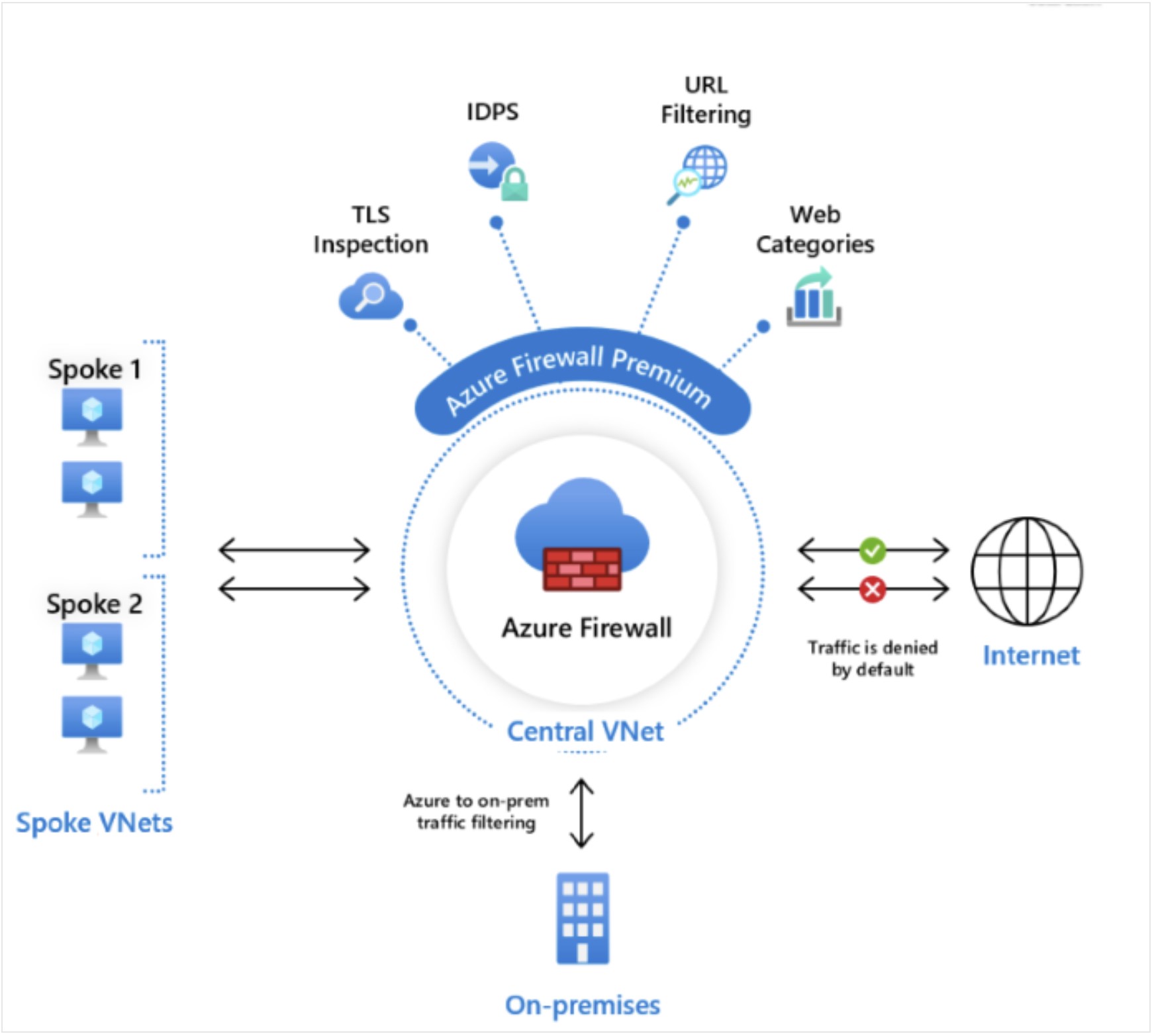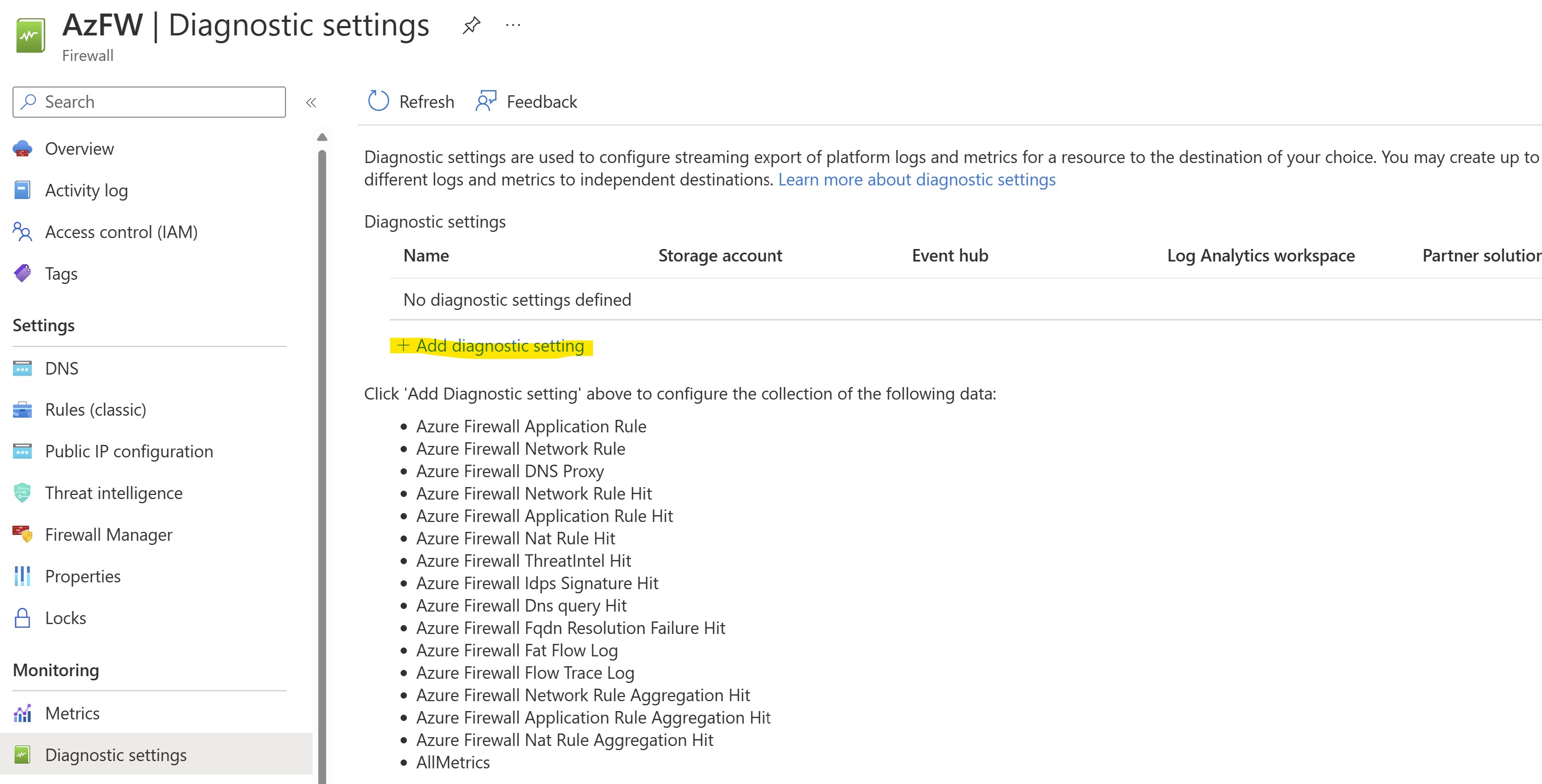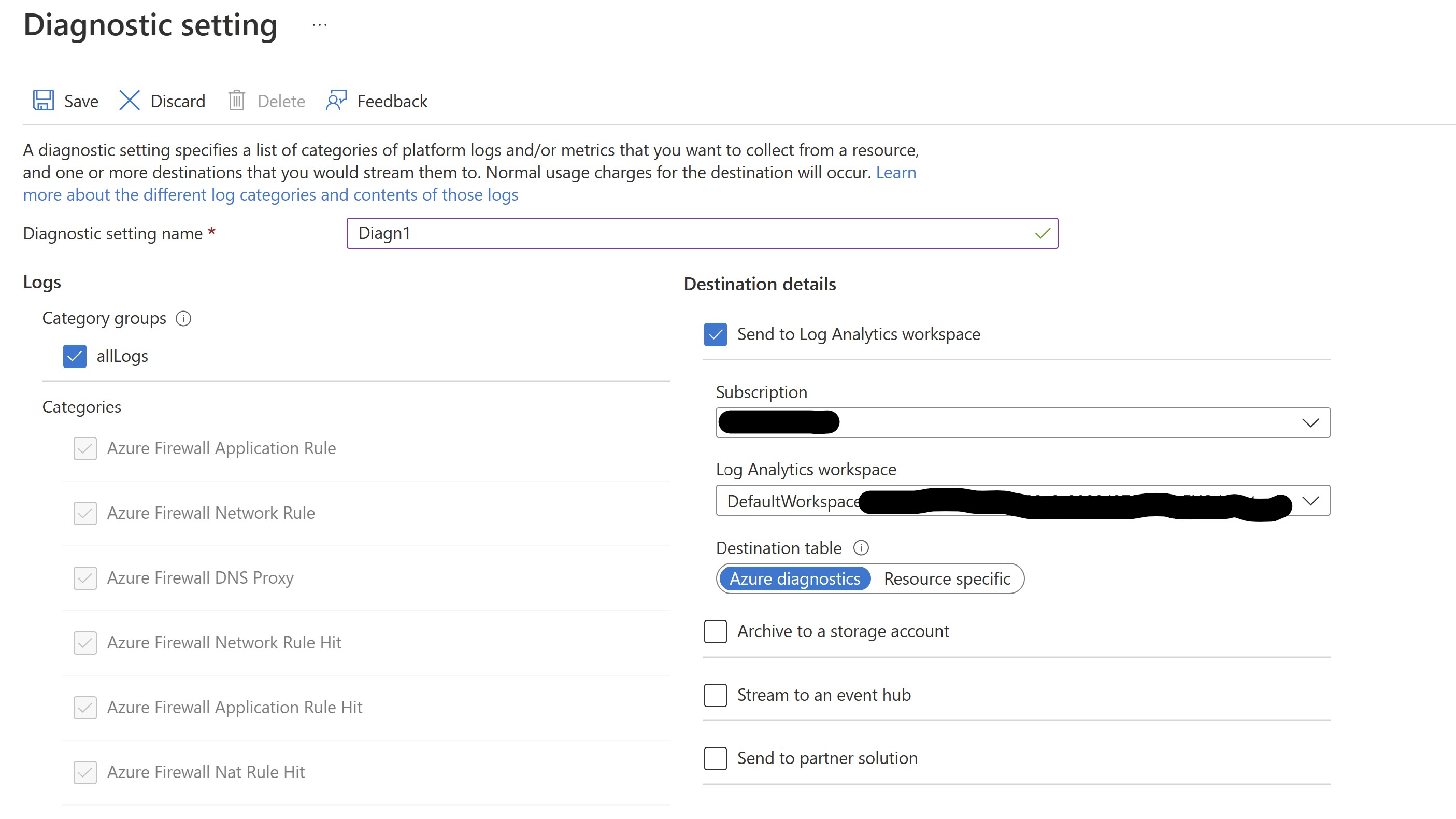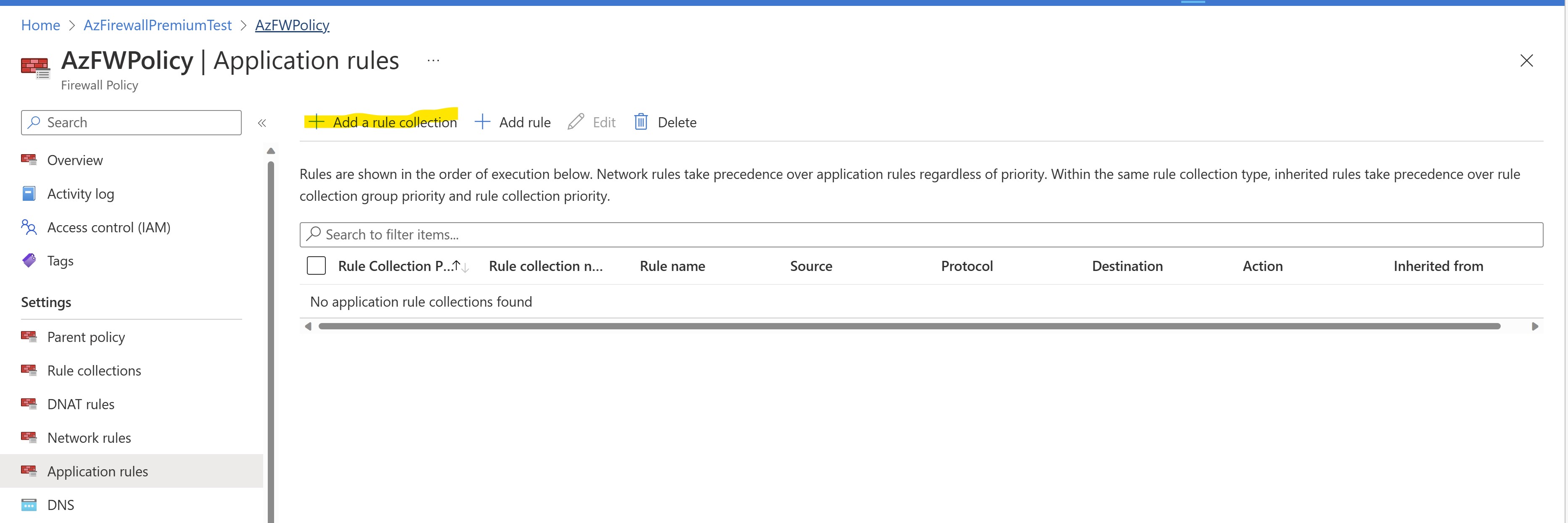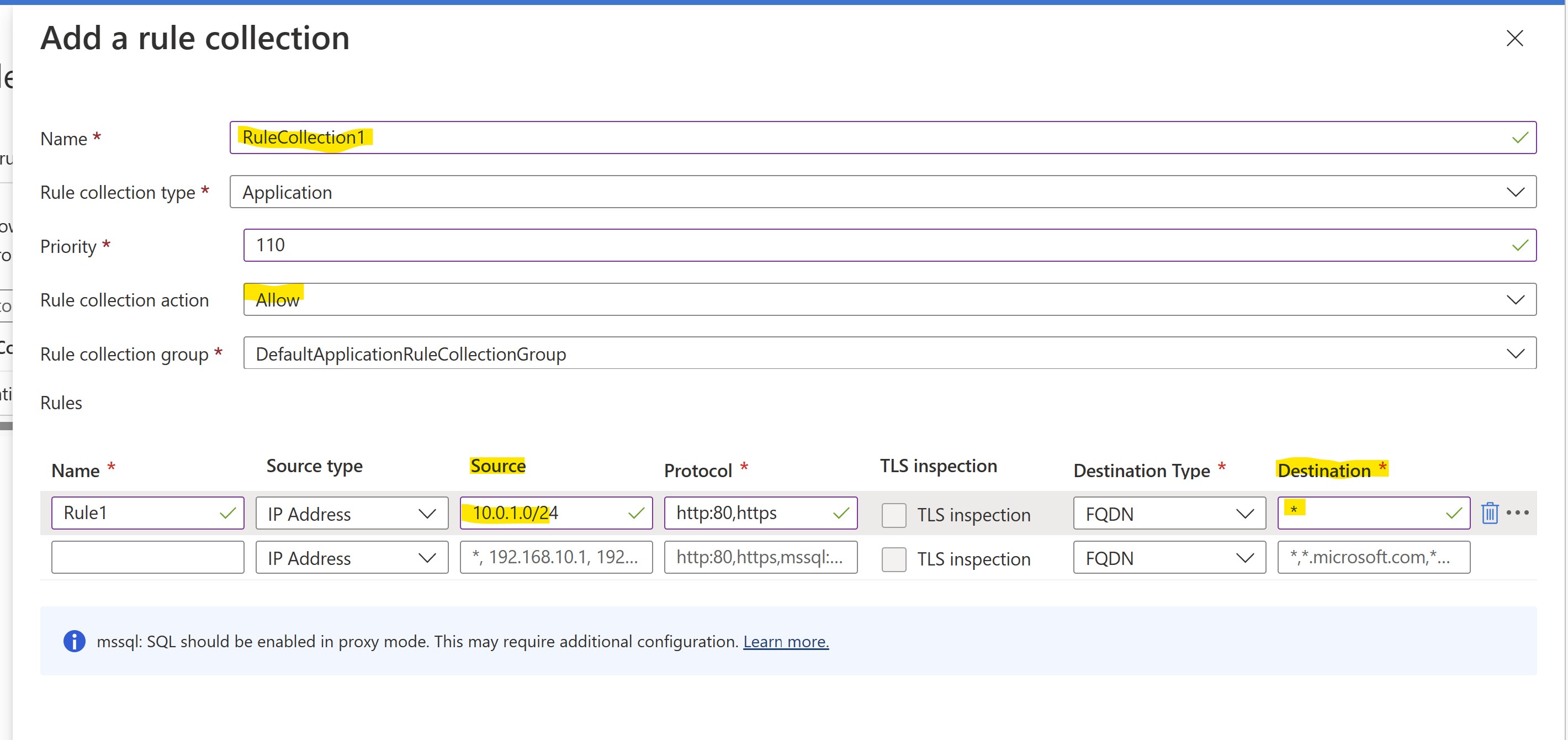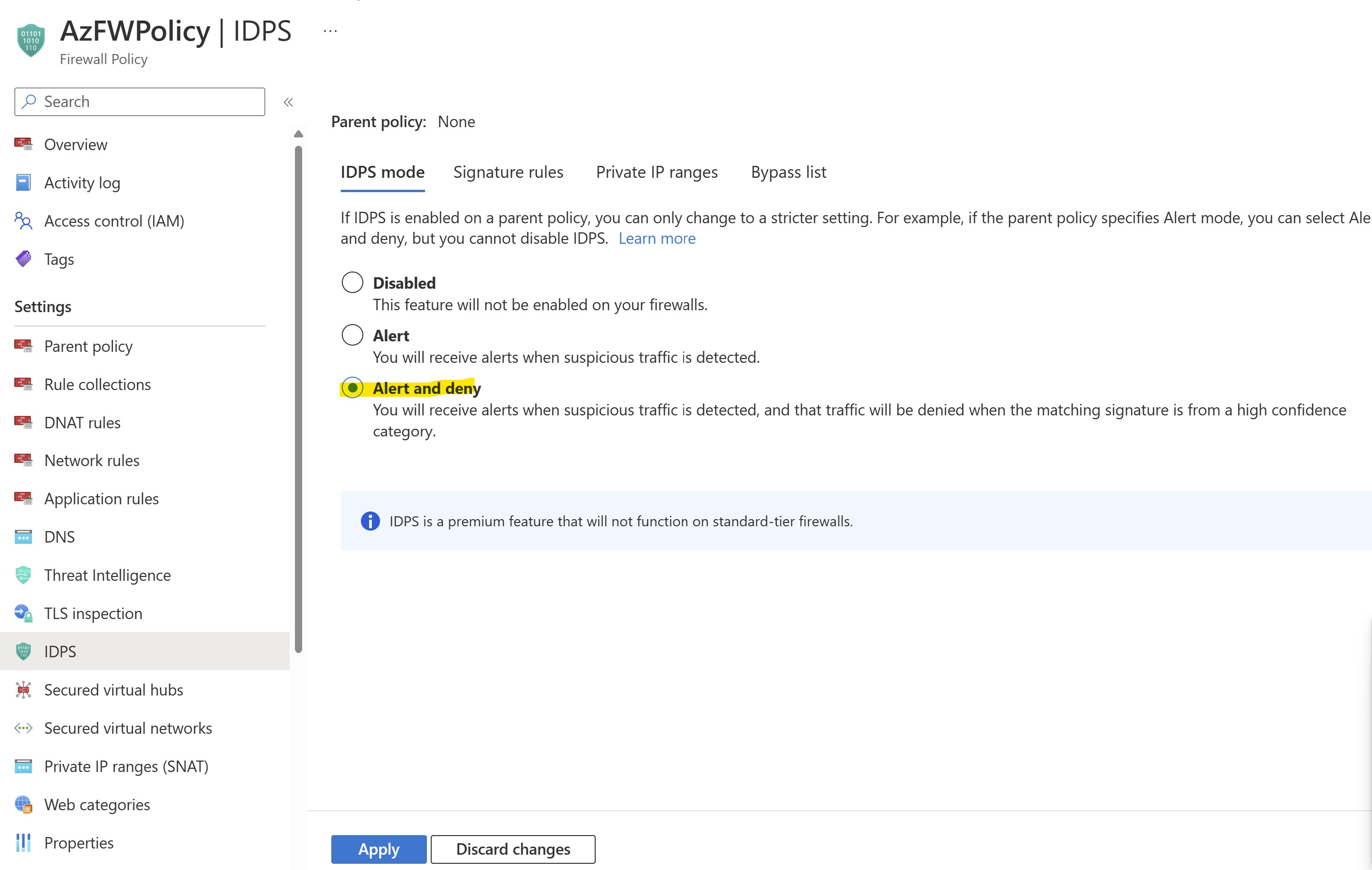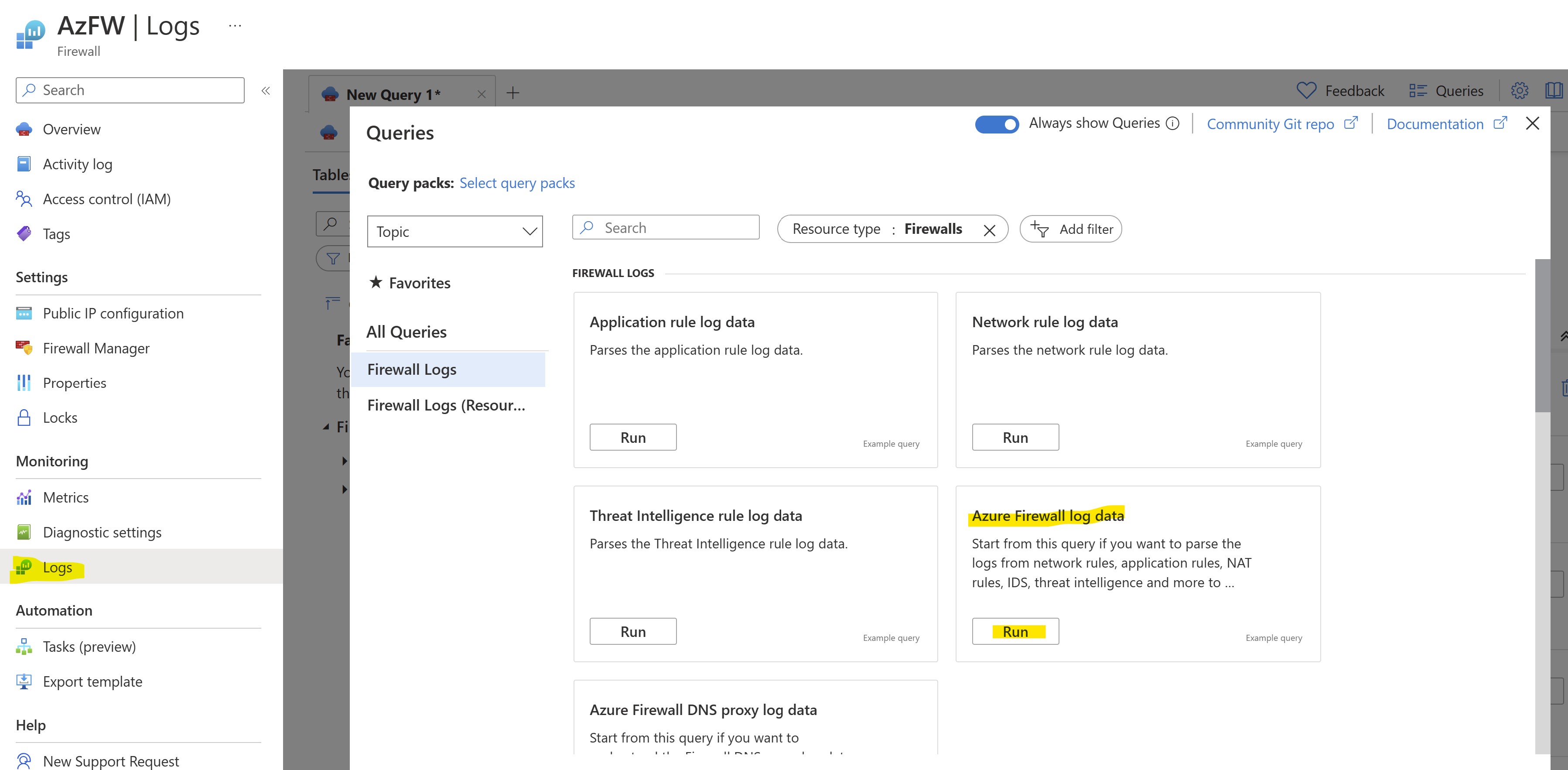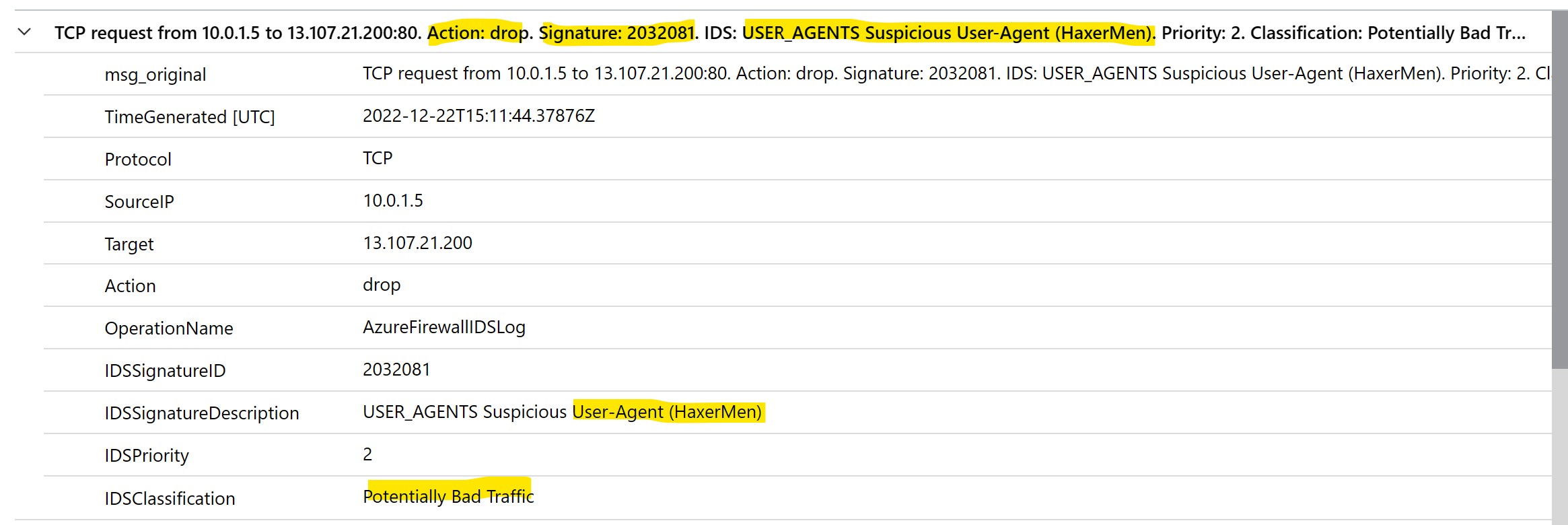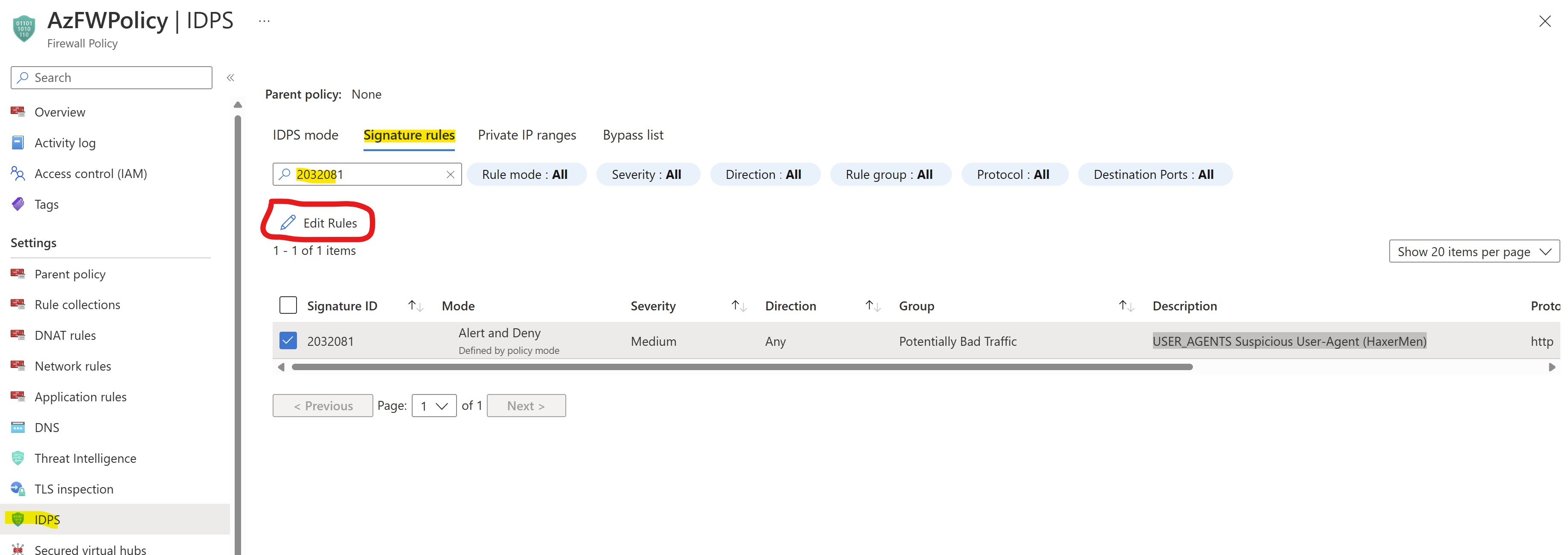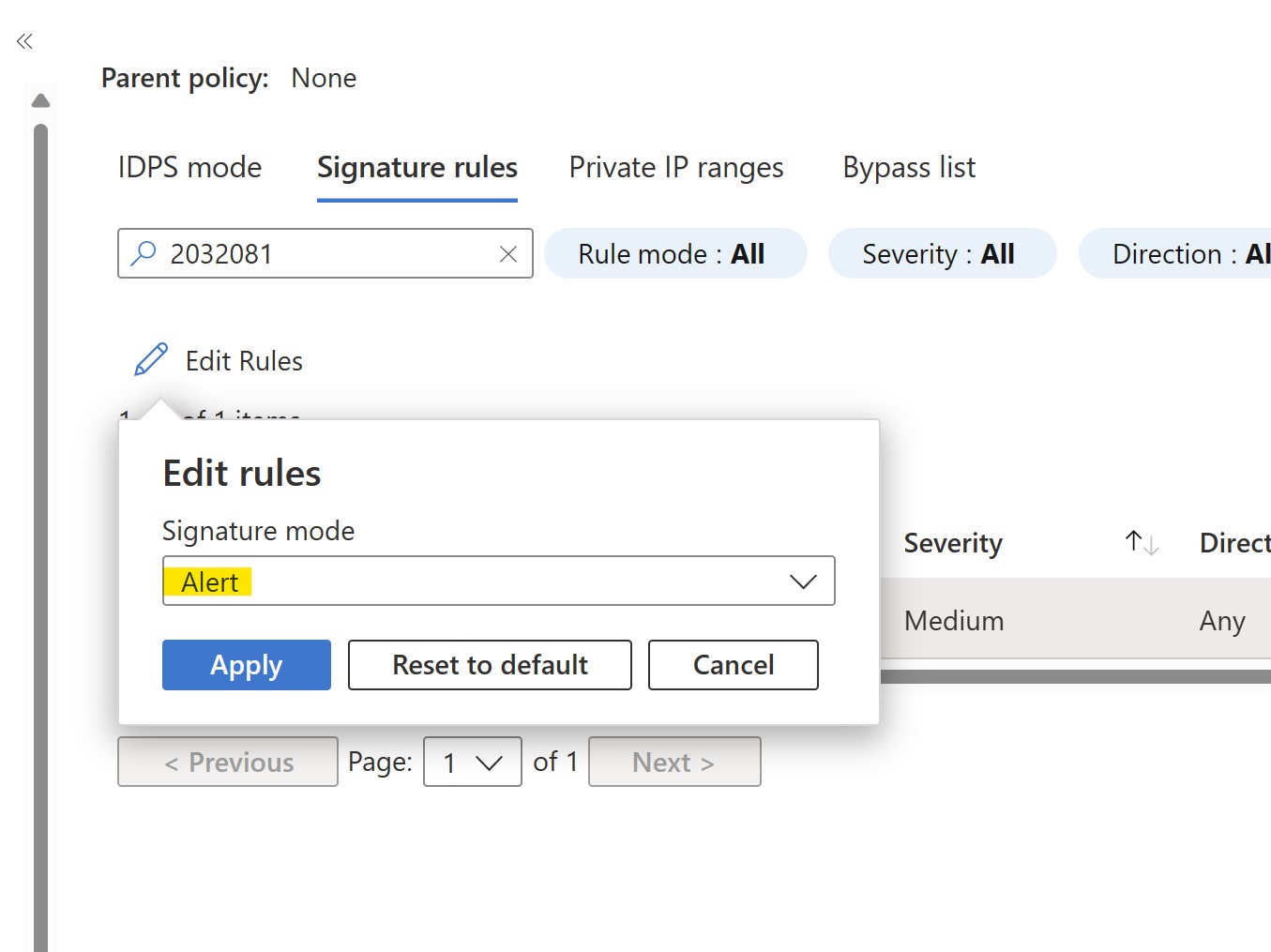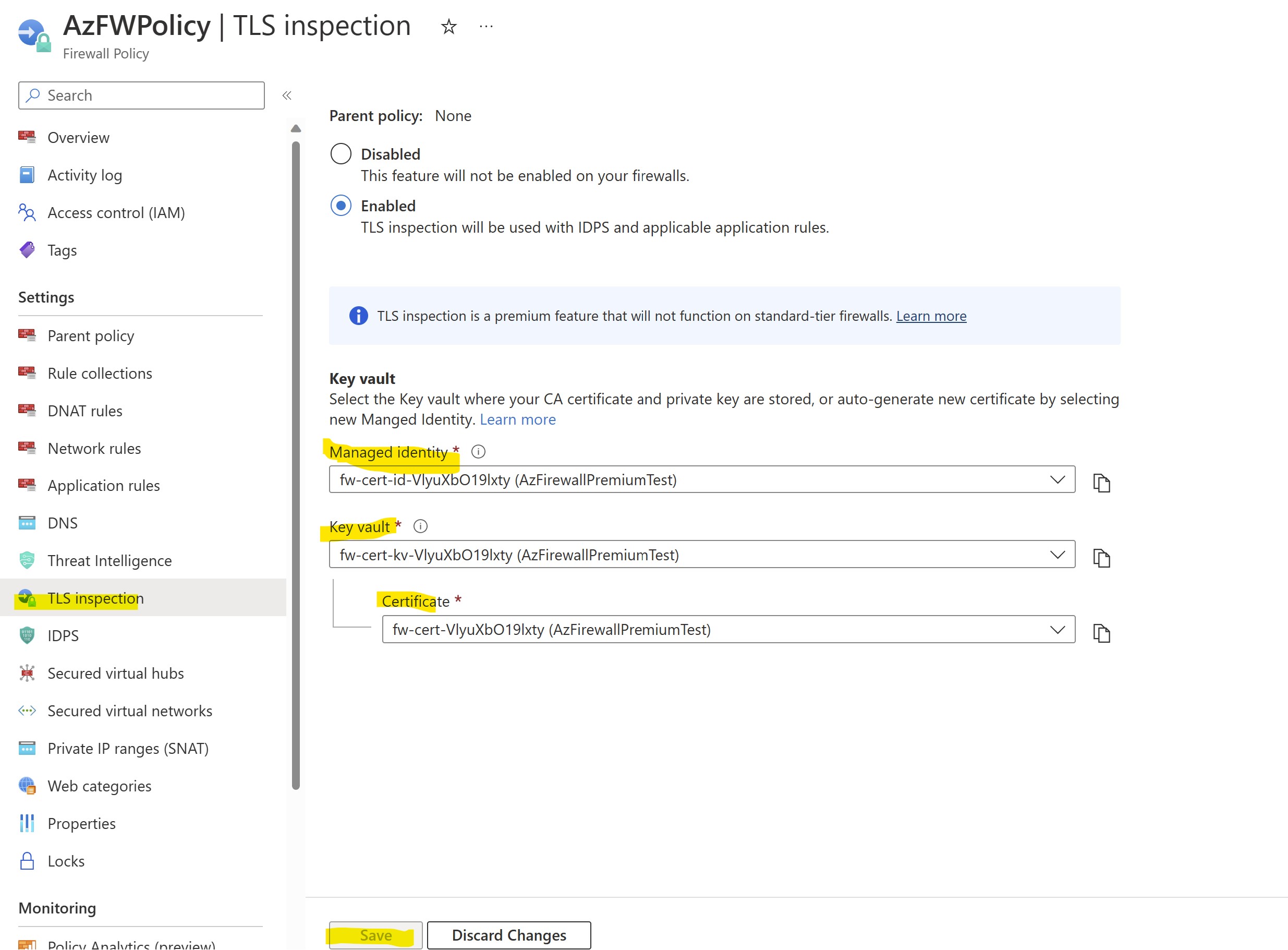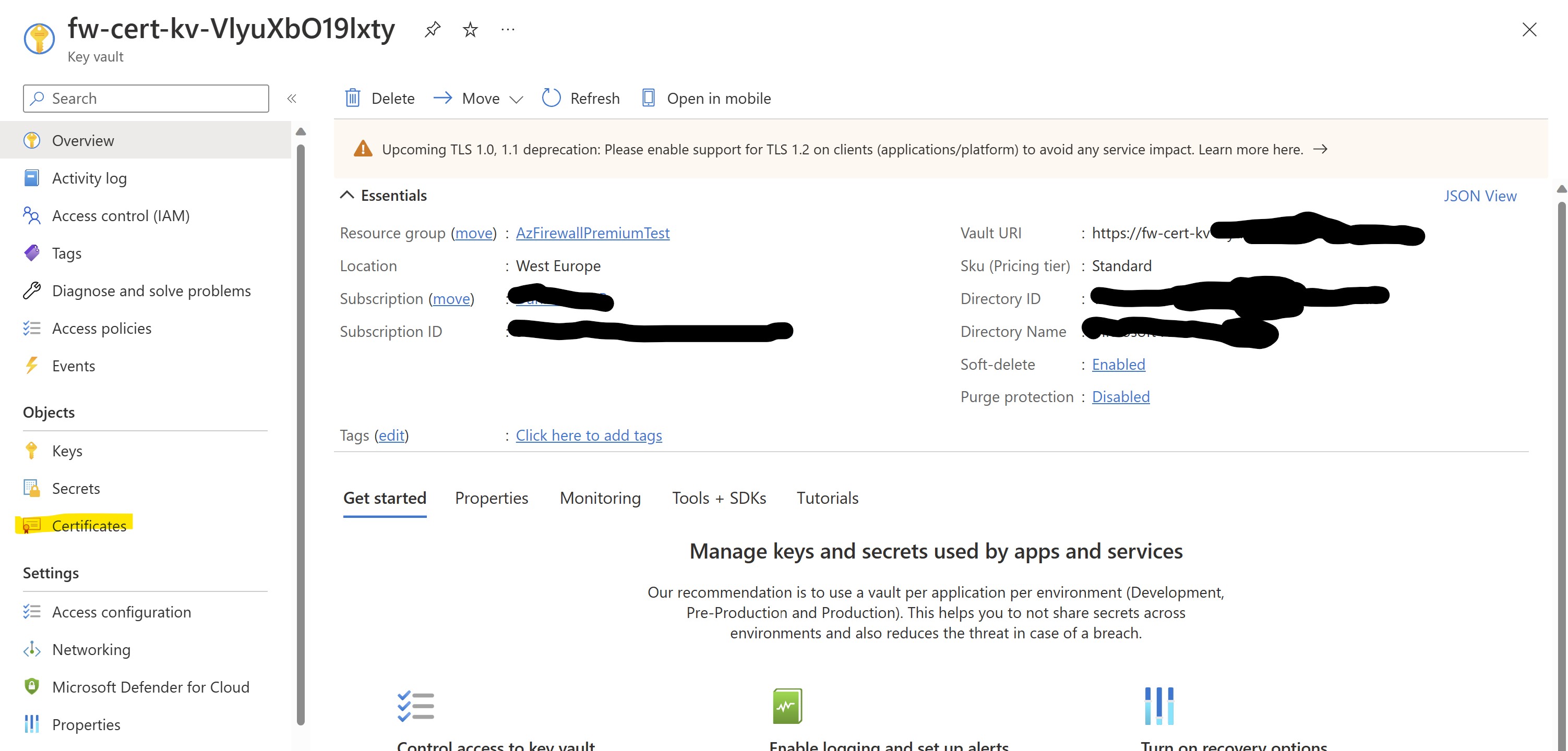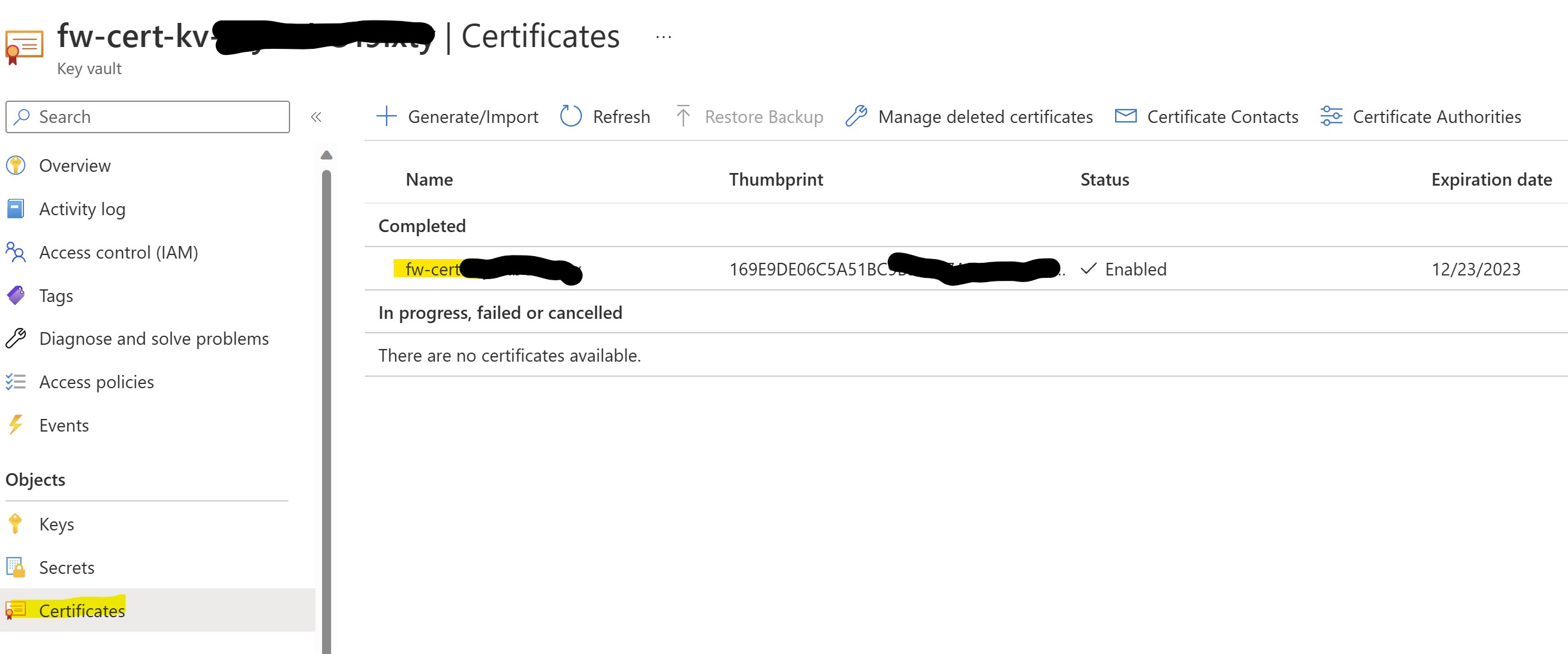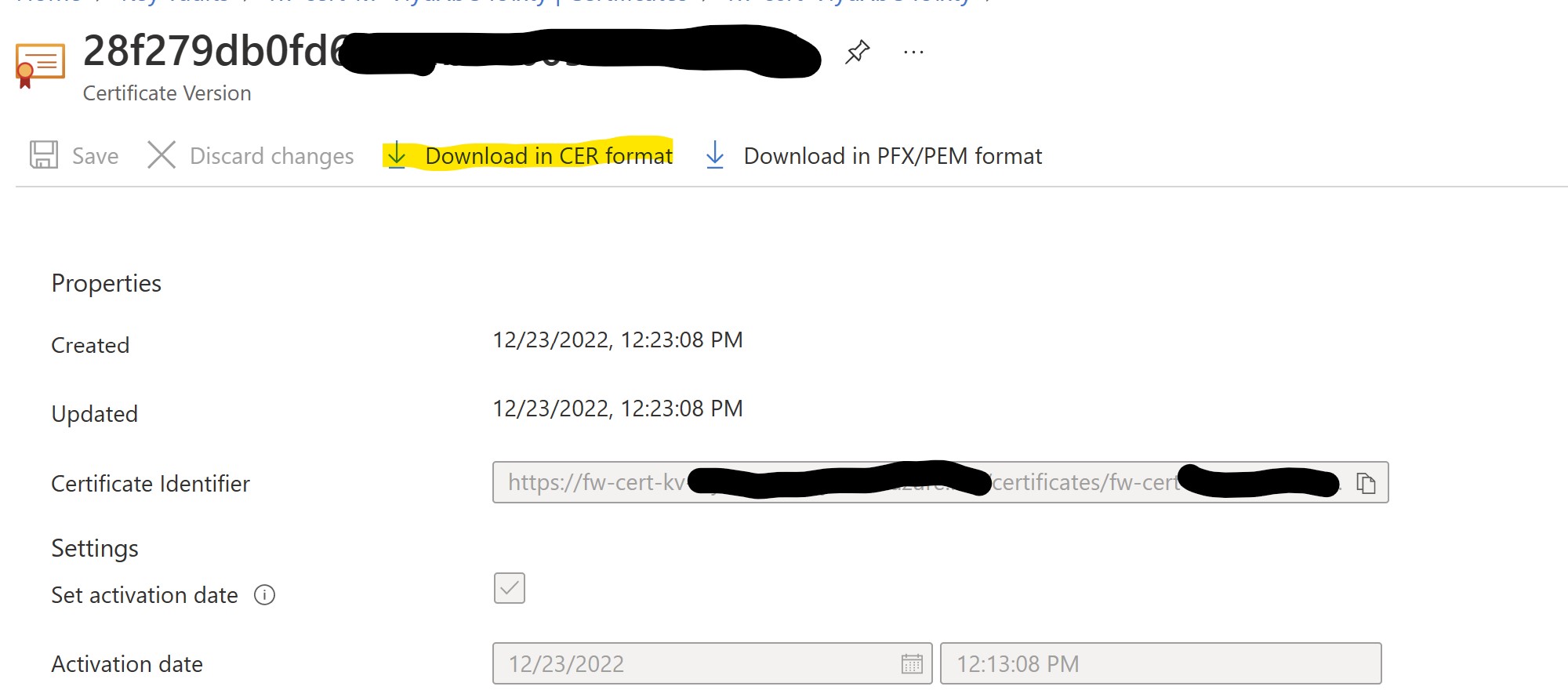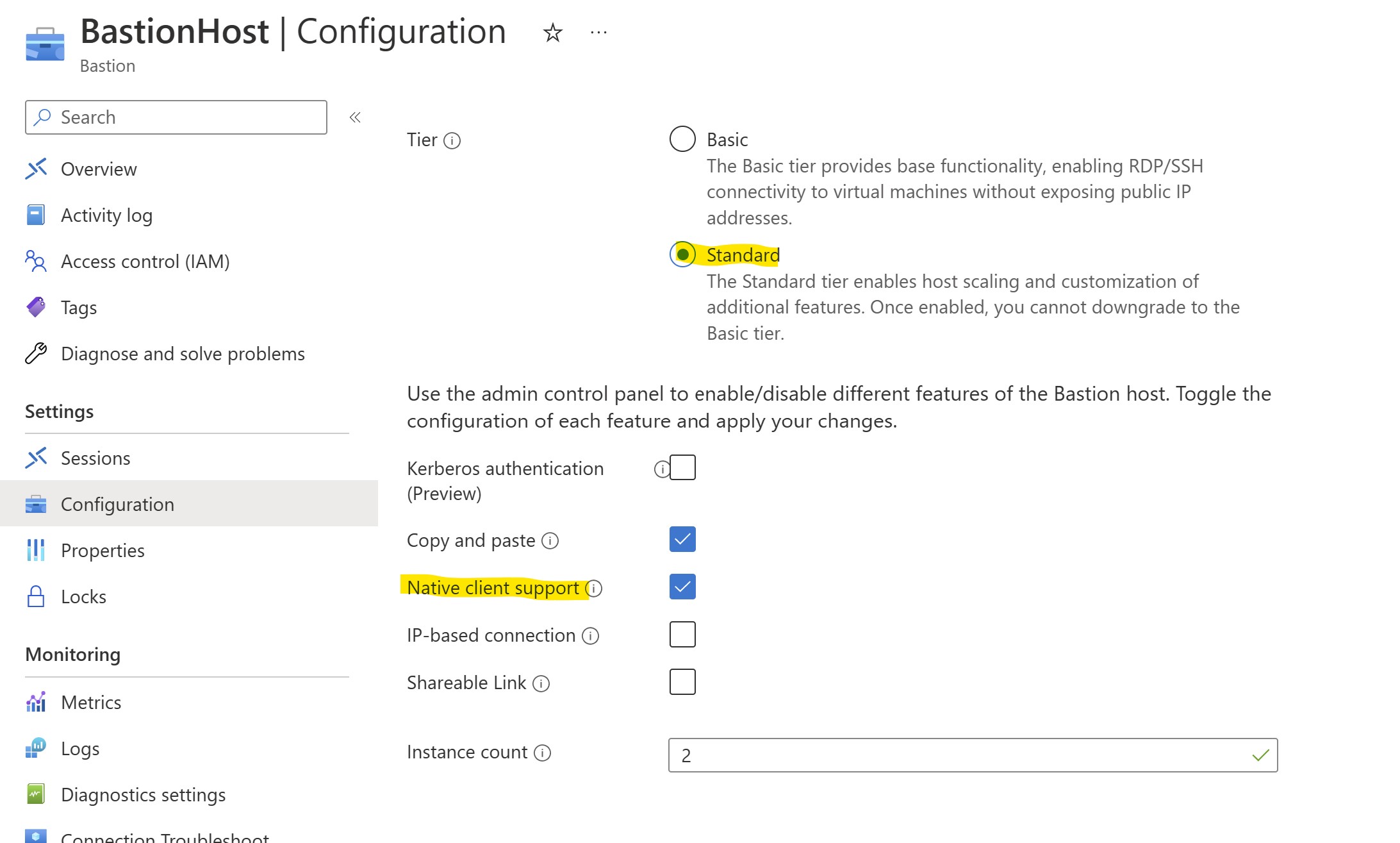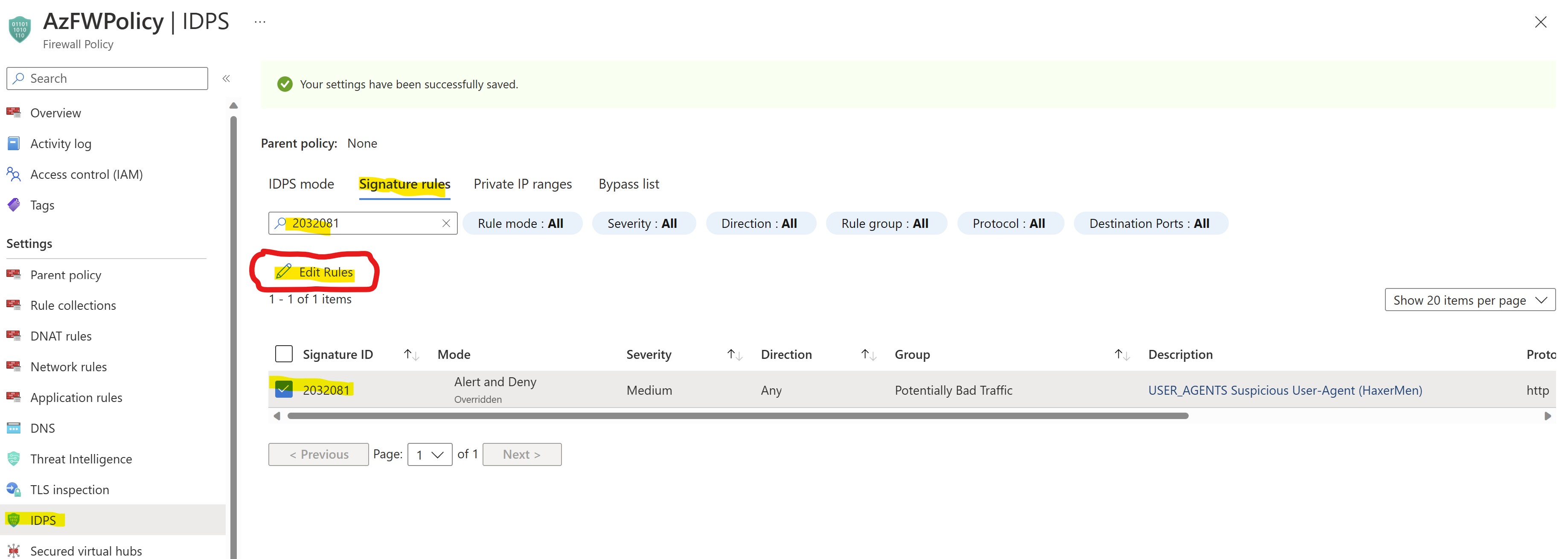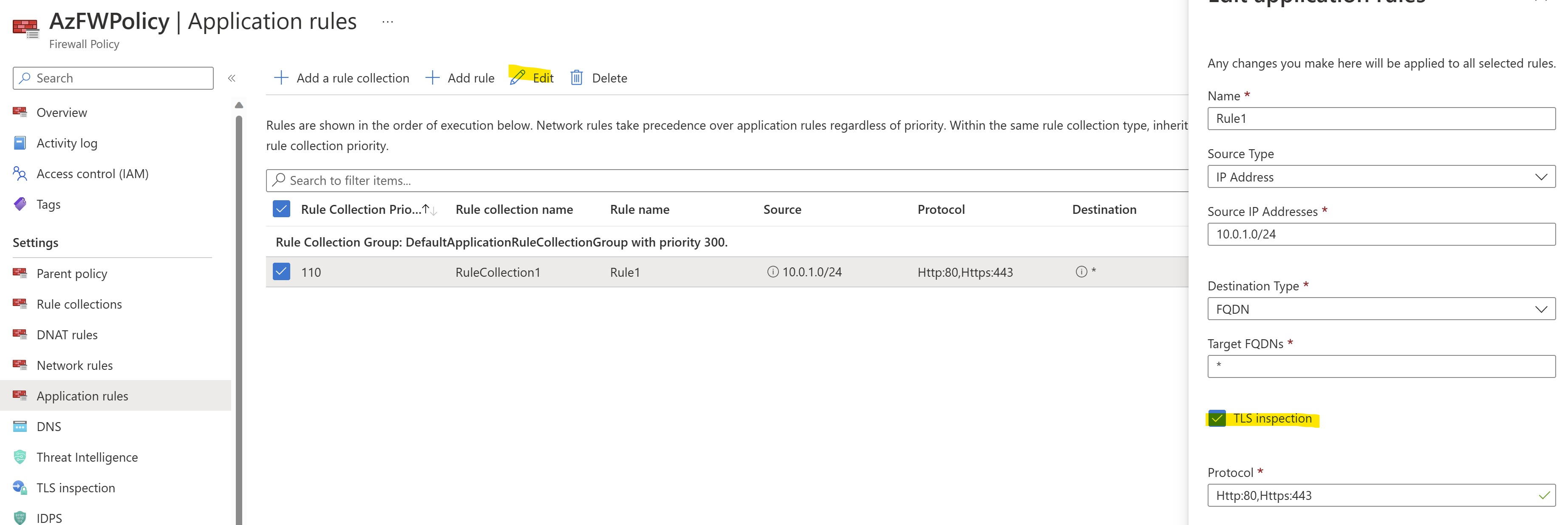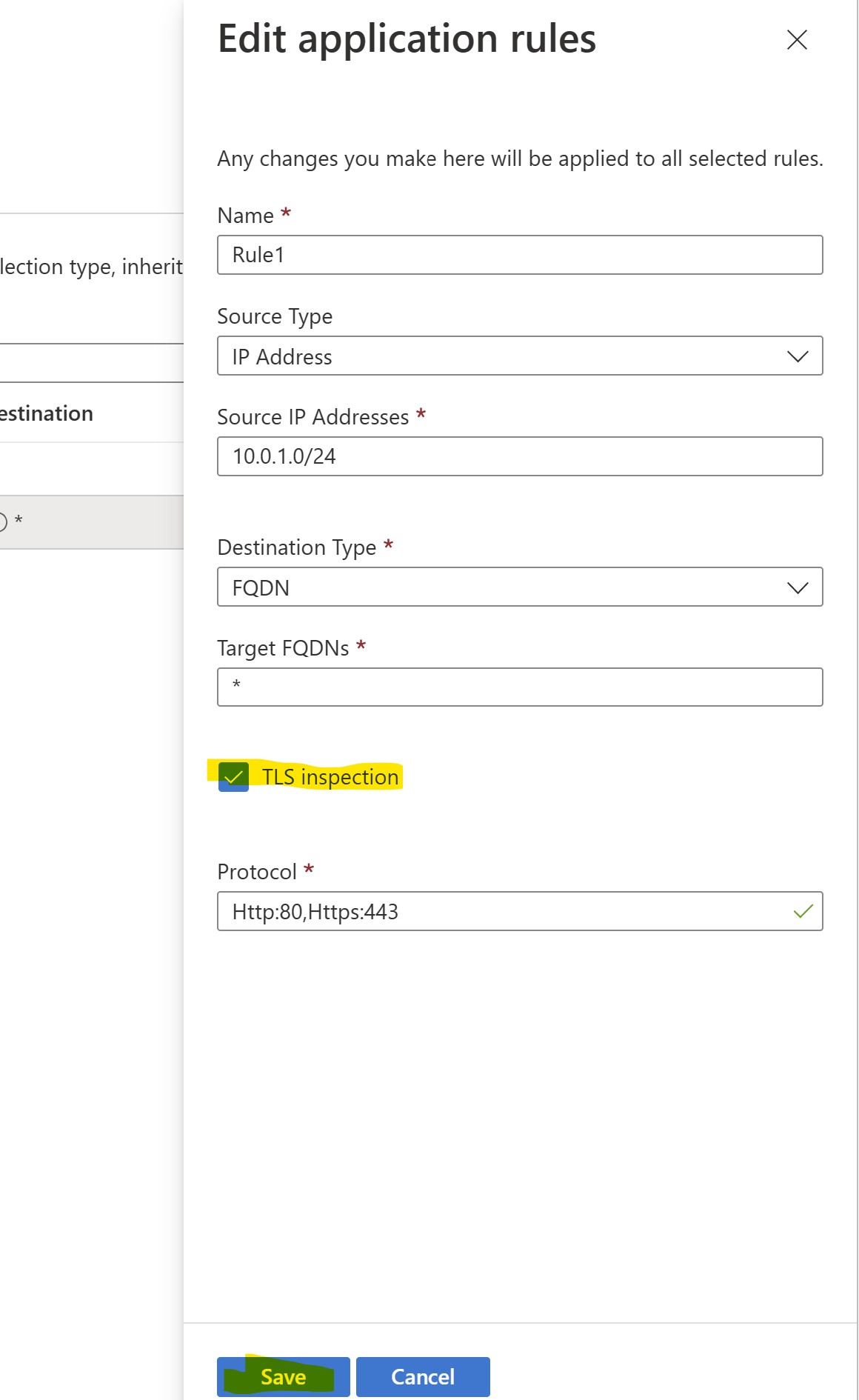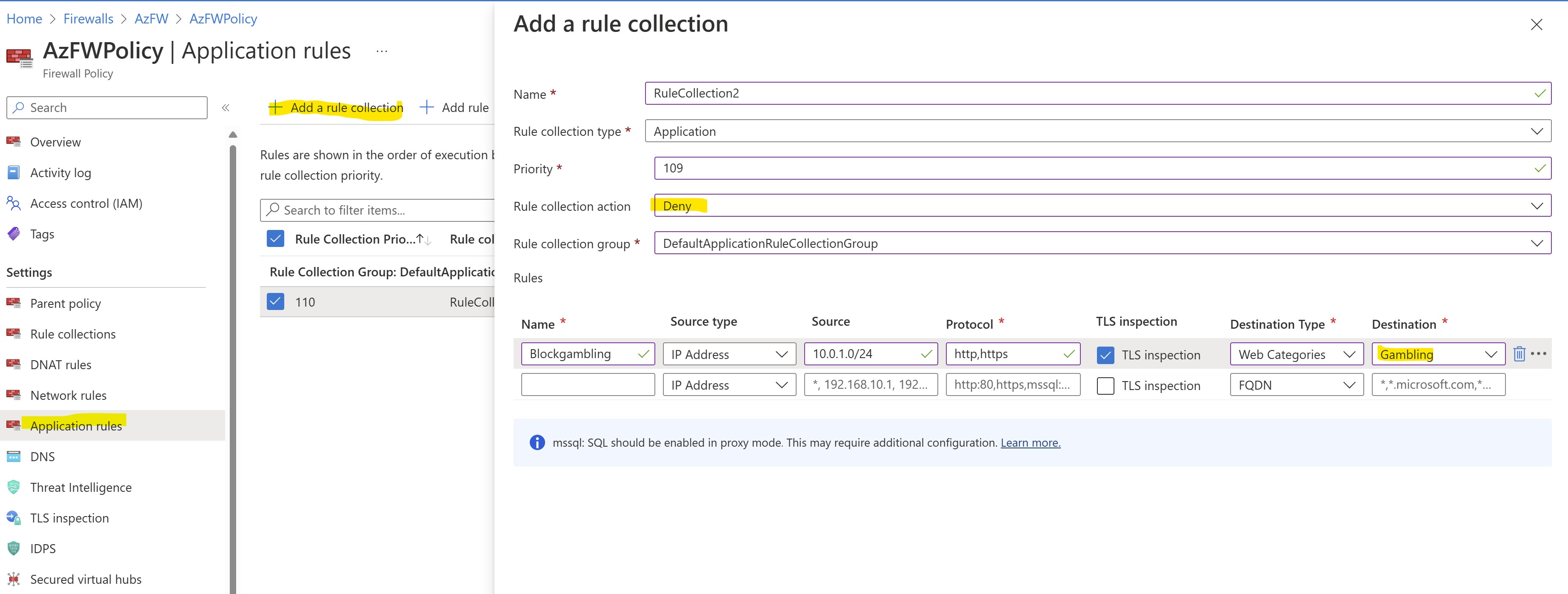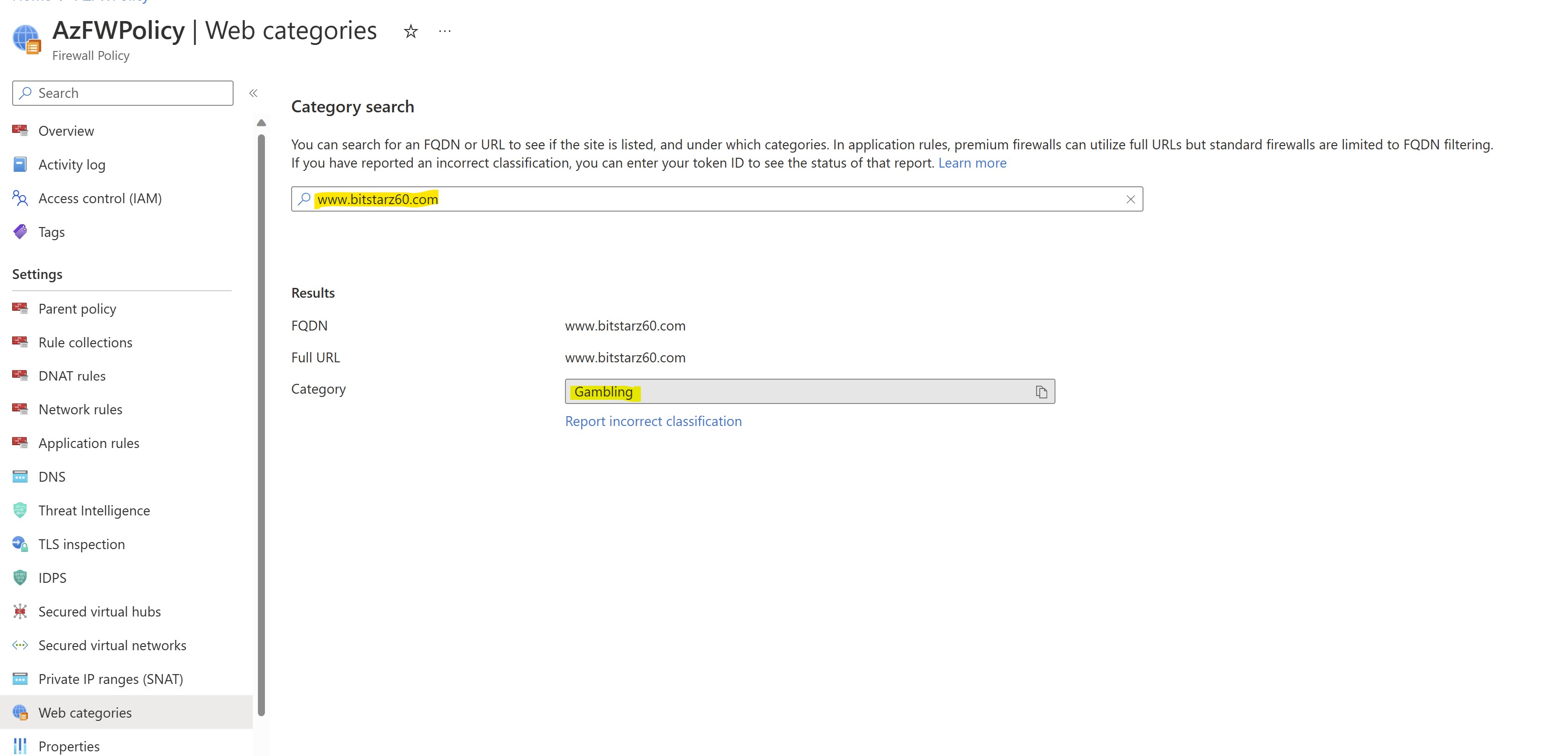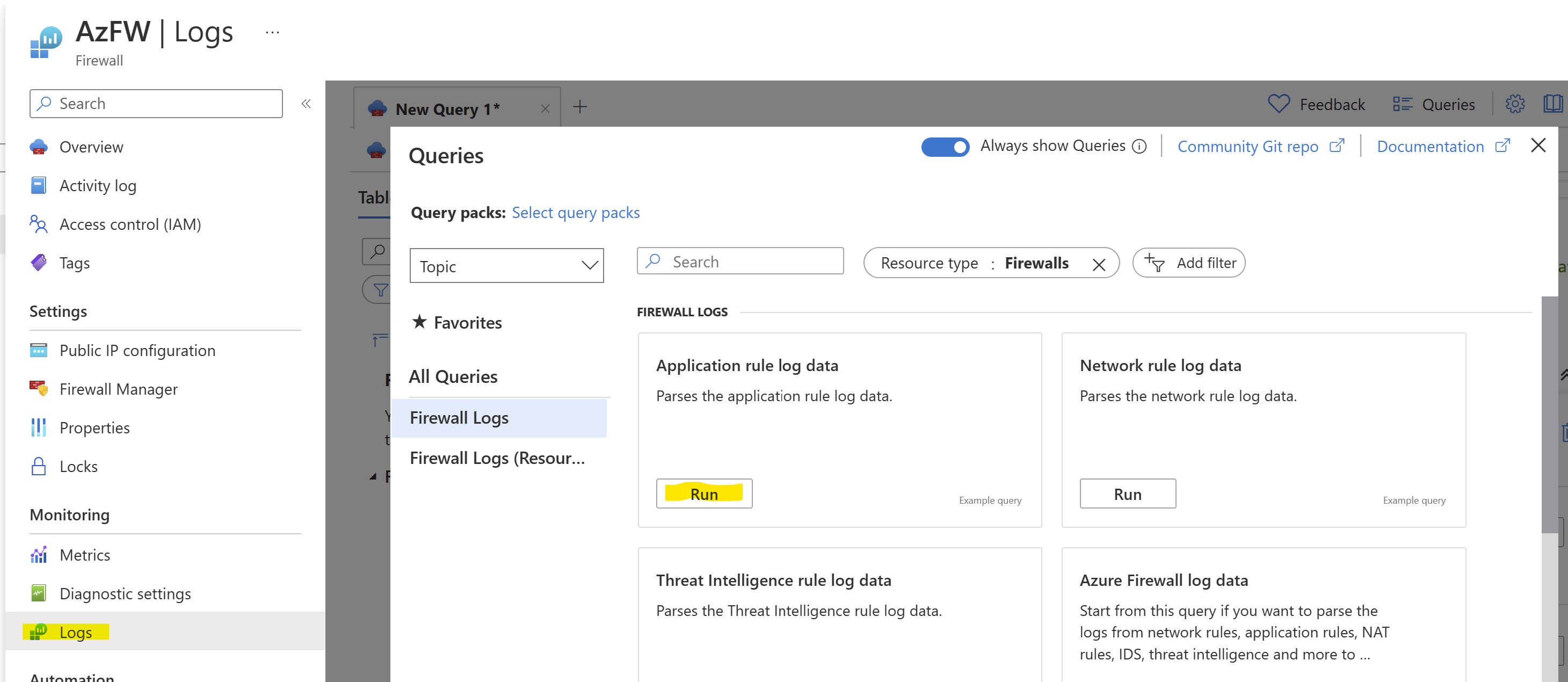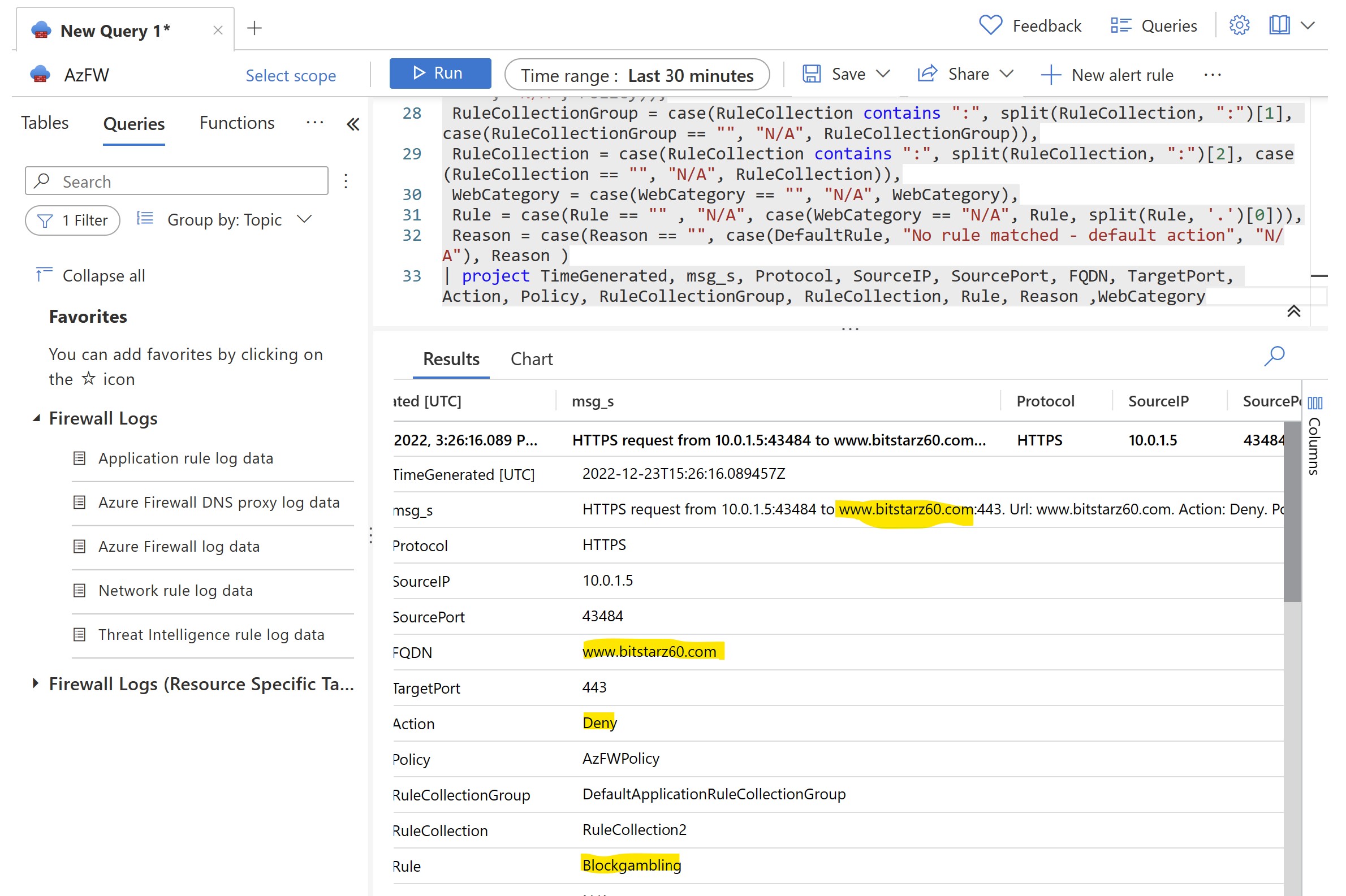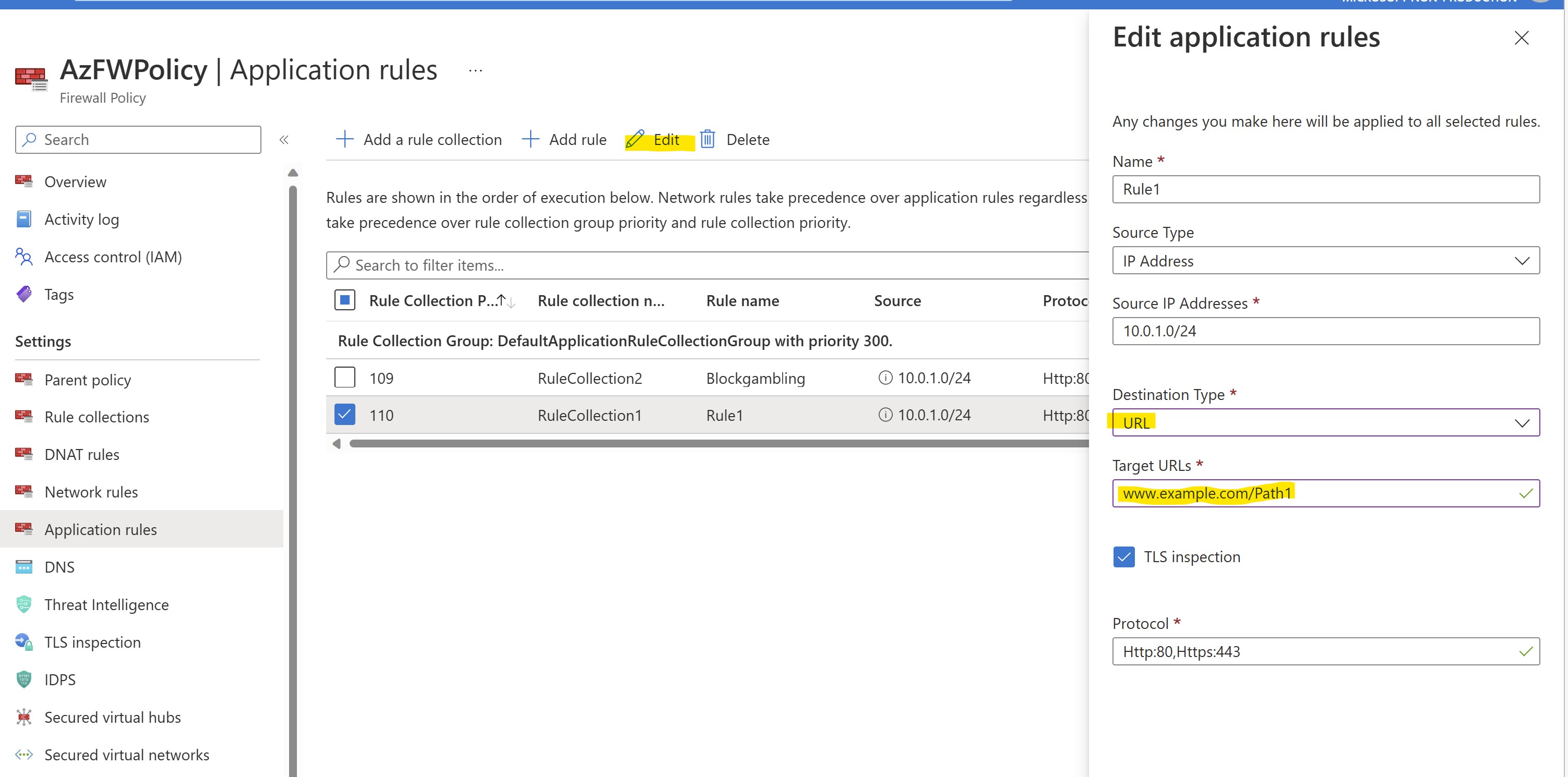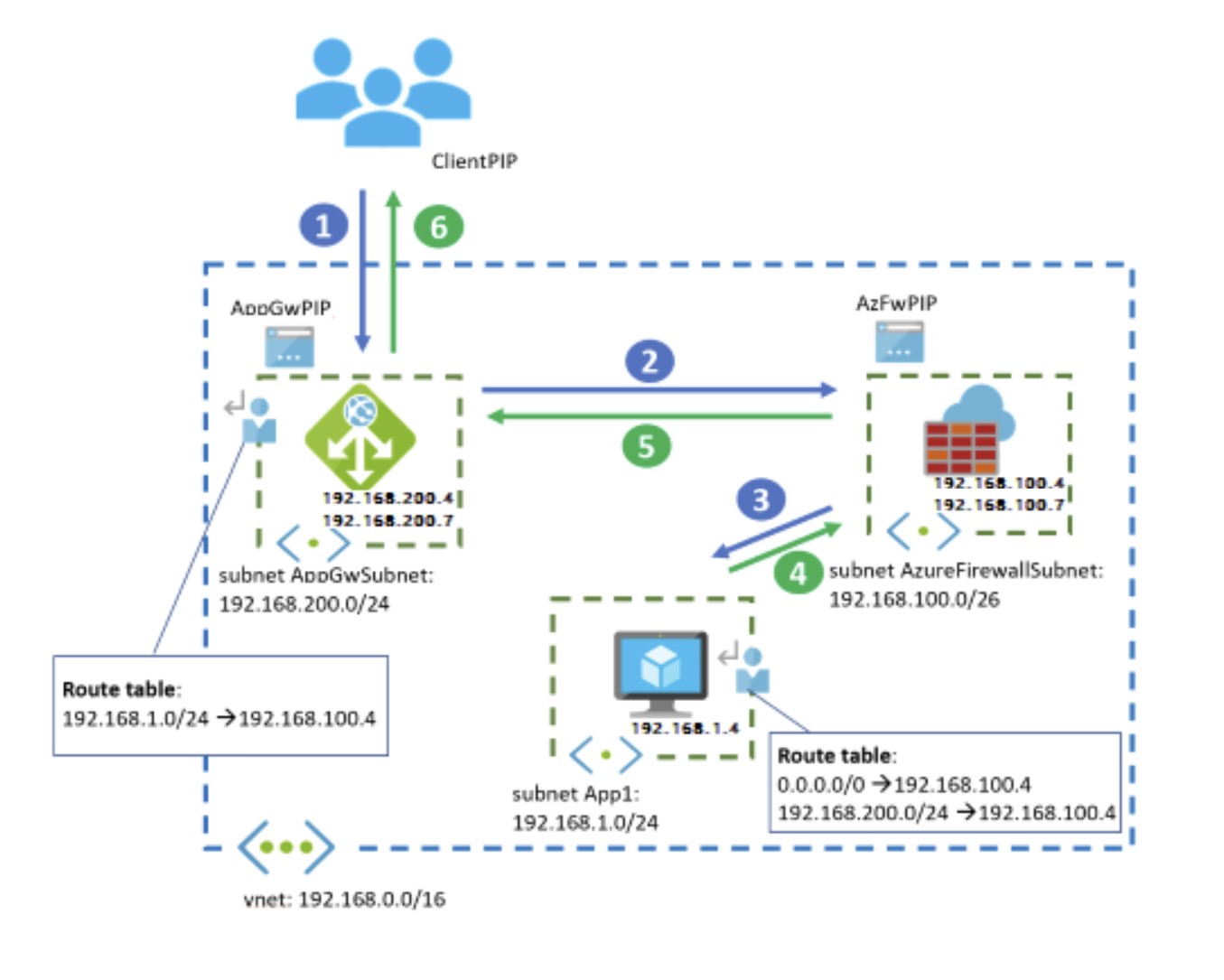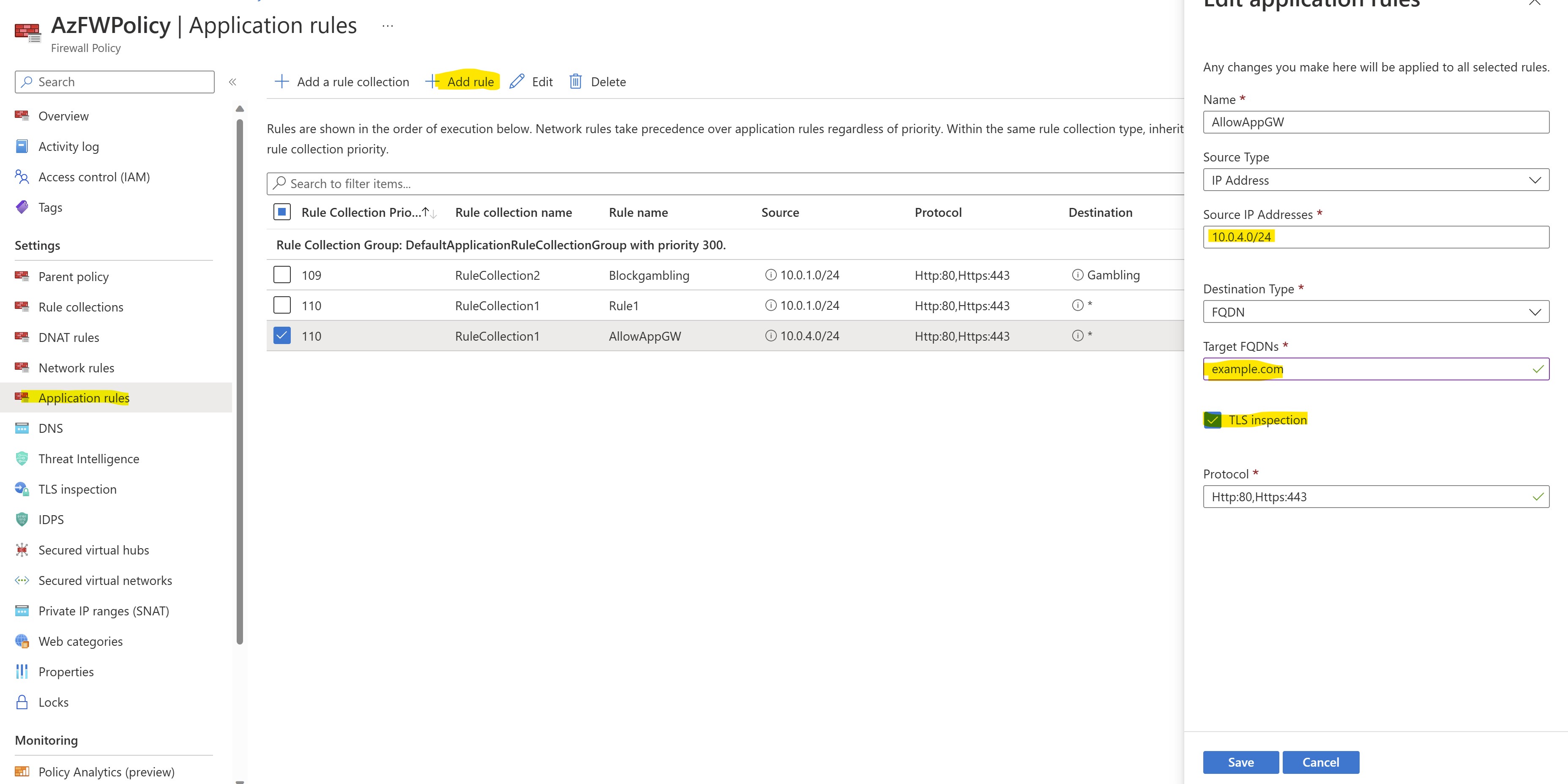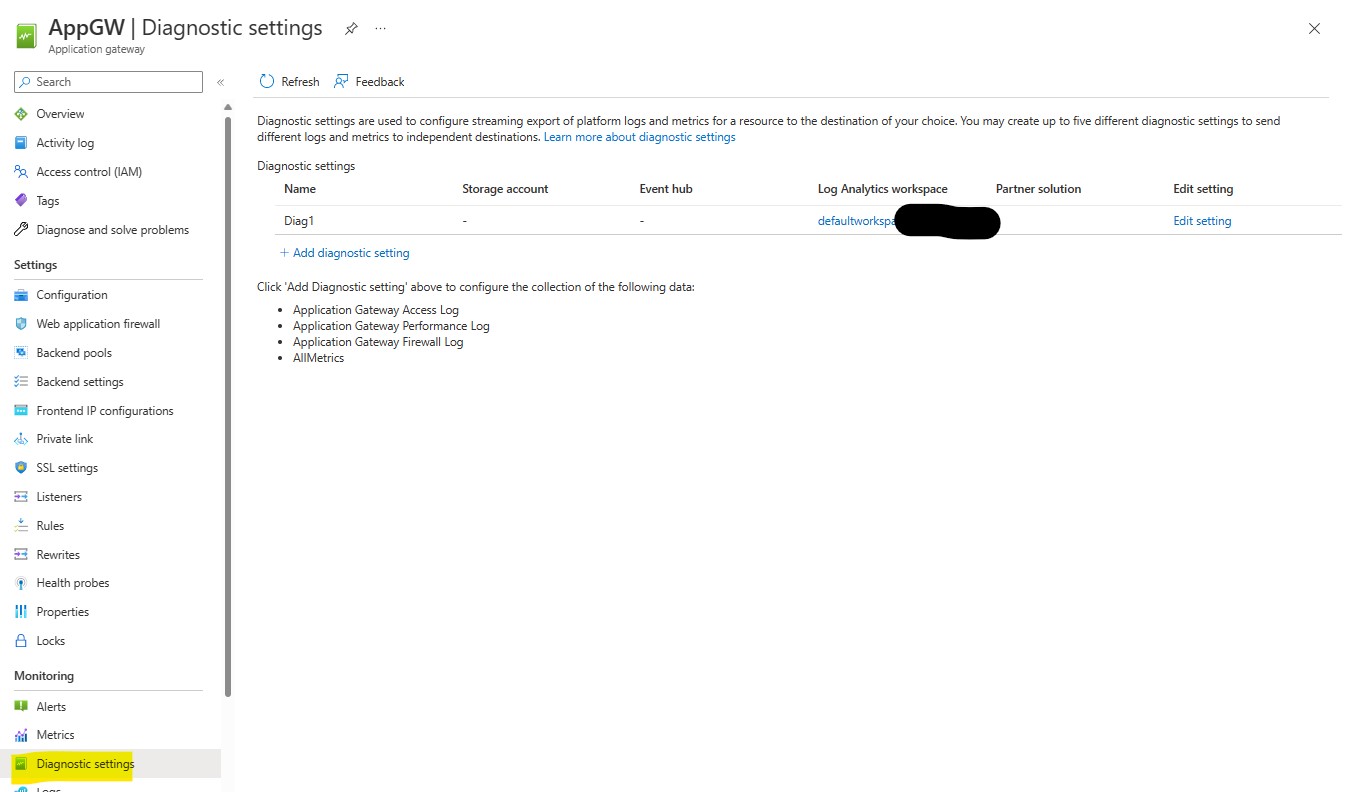Deployment and preliminary configurations
CHALLENGE 1: IDPS for unencrypted traffic
CHALLENGE 2: TLS Inspection and IDPS on encrypted traffic
CHALLENGE 3 (Optional): Block specific Web Categories
CHALLENGE 4 (Optional): Block specific URL paths
CHALLENGE 5: Application Gateway & Azure Firewall chain with TLS inspection
In this microHack we will test some of the most interesting functionalities introduced by Azure Firewall Premium SKU
The environment is composed by a simple Windows VM with internet traffic protected by Azure Firewall Premium.
In the last challenge we will introduce an Application Gateway with WAF protection, to simulate the commonly used chained topology (AppGW + FW) for exposing applications to the Internet leveraging both WAF + IDPS protection layers.
All is deployed in the same VNET with no particular routing configurations.
Let's start with the deployment of the environment:
-Log in to Azure Cloud Shell at https://shell.azure.com/ and select Bash
-If necessary select your target subscription:
az account set -s {Subscription Id}
-Clone the GitHub repository:
git clone https://github.com/Danieleg82/AzFirewallPremium-MH
-Change directory:
cd ./AzFirewallPremium-MH/Terraform/Main
-Initialize terraform and download the azurerm resource provider:
terraform init
-Now start the deployment (when prompted, confirm with yes to start the deployment):
terraform apply
At the end of deployment phase, you will see the following resources under resource group named AzFirewallPremiumTest:
- A VNET (VNET1) hosting:
- A client VM named VM1 (credentials --> Username: adminuser / Pwd: AzFWPa$$w0rd)
- An Azure FIrewall Premium named AzFW bound to relevant Firewall Policy
- A Bastion subnet and Bastion host for the remote connectivity
After our environment is deployed, let's proceed as first step with enabling Diagnostic logging on the FW.
If needed, create a LogAnalytics workspace where to host the FW logs.
In this first challenge, we'll test basic IDPS functionalities on pure HTTP unencrypted traffic.
Let's proceed creating a basic outbound ApplicationRule which will initially allow any kind of outbound internet connection from our internal subnet.
Let's find our FW Policy from portal and let's select "Add a rule collection" under the "Application rules" section
The rule will have the following characteristics:
- Collection Name: RuleCollection1
- Type: Application
- Priority: 110
- Action: ALLOW
- Rule Name: Rule1
- Sourcetype = IP address
- Source = 10.0.1.0/24
- Protocols: http:80,https
- TLS Inspection: initially DISABLED
- Destinationtype = FQDN
- Destination: ANY
Click ADD to apply the change to the policy
Let's now go ahead enabling IDPS on our FW. This will be set in Alert & Deny mode.
Since TLS Inspection is initially disabled, we will see how protection works exclusively for unencrypted (HTTP) traffic.
Let's select our FW Policy and locate IDPS section in the portal. Let's choose "Alert & Deny" option and Apply changes:
We're now ready to test IDPS functionalities. To do that, let's connect to the VM1 using the credentials reported above.
You can use the deployed Bastion host for accessing privately.
From your VM, now try to connect to the following site in plain HTTP:
curl -I "http://www.bing.com"
Are you able to access it?
Let's now emulate an attempt of connection to our HTTP website using a malicious user-agent included in the GET request we send out to the destination server:
curl -I -A "HaxerMen" "http://www.bing.com"
What is the output now? Is that what you would expect?
Finally, repeat the test with the HTTPS version of same website:
With standard User-agents:
curl -I "https://www.bing.com"
...and with malicious one:
curl -I -A "HaxerMen" "https://www.bing.com"
Did you expect such result?
We can now review the Azure Firewall logs to find out the requests blocked by IDS.
Wait for some minutes after having performed the above tests, then run a query on "Azure Firewall Log" logs and review the filtered requests:
You can include the following line in the relevant Kusto query to parse just DENIED requests and narrow down the research to last 30 minutes:
Note the IDS Signature which is currently blocking the request and the reason for blocking:
We can now play with the functionalities of IDPS customization and decide to temporarily disable the IDPS signature triggered with our connectivity tests.
From the AzFW firewall policy configuration page, select and edit the rule 2032081 (USER_AGENTS Suspicious User-Agent (HaxerMen))
Let's configure the rule in simple ALERT mode and APPLY:
Let's connect back to our VM and test again the connectivity to a plain HTTP website using malicious agent:
curl -I -A "HaxerMen" "http://www.bing.com"
The Firewall is no longer dropping the request, but you will still be able to see an ALERT in FW logs related with such request.
In this second challenge we'll proceed enabling TLS inspection on our Azure Firewall, using a test self-signed CA certificate.
In production deployments you will be using internal intermediate CA certificates provided through your internal PKI infrastructure, but for the purpose of this MicroHack the self-signed certificate autogenerated by Azure Firewall is the quickest and simplest approach to perform the tests.
From Azure portal, let's locate our FW policy and let's enable TLS inspection leveraging auto-generation of KeyVault / ManagedIdentity and self-signed certificate:
!!NOTE: At present day, a known issue in Azure portal could generate an anomalous behavior with the Key-Vault list box in the UI stuck in LOADING.
If you had this issue please use this workaround:
-Select DISABLED radio button
-Click SAVE
Self-enrolled certificate is supposed to start deploying, you can then select again the ENABLED radio button.
If needed, repeat the procedure DISABLED + SAVE multiple times.
THe issue is currently under repair phase.
After you click SAVE, TLS inspection will be enabled on your Firewall, and a new KeyVault containing a self-signed CA certificate will be created in your subscription.
The next step now is to download a .CER copy of such CA certificate to be imported on our client VMs in order to create the trust needed for inspection to be feasible.
Let's locate the KeyVault created by the FW:
Access the "certificate" section:
Select the certificate:
Click on Current Version:
Download a .CER copy of the certificate:
Let's rename this file in .CRT for the import on Linux VM.
To import our .CRT file on a Linux VM, we can leverage the Bastion Standard Tunneling feature.
Select your Bastion Host in the portal and review its properties.
In particular, make sure that SKU is Standard and that NativeClientSupport option is enabled. If not, proceed enabling it
Now, let's access VM1 via Bastion and let's grant appropriate permissions on home folder for being able to import our certificate:
sudo chmod 777 /
We can now proceed creating a Bastion Tunnel to upload the certificates.
From a bash terminal run the following, making sure to replace the placeholders for SubscriptionID and VMResourceID with your environment's values.
az login
az account list
az account set --subscription "<subscription ID>"
az network bastion tunnel --name "BastionHost" --resource-group "AzFirewallPremiumTest" --target-resource-id "<ResourceID of VM1>" --resource-port "22" --port "5000"
Now open a new command prompt, and proceed uploading the .CRT file you downloaded previously to our VM1:
(replace the source field "local machine file path" with the path where you downloaded the certificate)
scp -P 5000 < local machine file path > adminuser@127.0.0.1:/
Note: you will be asked to insert your adminuser's password to completed the operation
Let's proceed creating the trust for such certificate:
(replace appropriate fields with real file name)
sudo cp /fw-cert-xxxx.crt /usr/local/share/ca-certificates/fw-cert-xxxx.crt
Update the CA store:
sudo update-ca-certificates
The Firewall's self-signed certificate is now trusted on our client VM.
We're now ready to test IDPS on encrypted connections.
As first step, let's re-enable the DENY action for IDPS rule with signature 2032081
After having applied this, let's proceed enabling TLS inspection in the Application Rule we configured to ALLOW outbound traffic from our client VM:
We're ready to test IDPS on encrypted traffic with TLS Inspection enabled.
Let's connect back to our VM1 via Bastion and run:
curl -I -k "http://www.bing.com"
and
curl -I -k "https://www.bing.com"
Note the "-k" parameter in CURL to allow CURL to ignore errors related with the presence of self-signed certificate (the firewall's one) in the TLS chain.
Let's now run:
curl -I -k -A "HaxerMen" "http://www.bing.com"
and finally
curl -I -k -A "HaxerMen" "https://www.bing.com"
Are we obtaining the expected result here?
After having tested IDPS and TLSInspection, we will hear demonstrate the Azure Firewall's Web categorization feature, and how it can be used to block connection attempts to external websites you wanted to block basing on your security policies.
Here we will start by blocking any request toward gambling websites.
As first step, let's create a new rule collection in our FW policy for blocking this kind of traffic.
The rule will have such characteristics:
- Collection Name: RuleCollection2
- Type: Application
- Priority: 109
- Action: DENY
- Rule Name: Blockgambling
- Sourcetype = IP address
- Source = 10.0.1.0/24
- Protocols: http:80,https
- TLS Inspection: ENABLED
- Destinationtype = WEB CATEGORIES
- Destination: GAMBLING
We're now ready to test the feature from VM1.
Let's connect to VM1 and test basic access to allowed websites:
curl -I -k "https://www.bing.com"
The site is allowed as expected.
Let's now test with a website categorized as gambling site.
In the "Web Categories" section of the firewall policy you can easily review if the considered web site is categorized as GAMBLING:
In VM1, let's run:
curl -I -k "https://www.bitstarz60.com"
Which result are you obtaining?
What's the meaning of the returned status code?
Is the remote server returning such status code?
We will now find trace of such blocked requests in our FW logs.
Let's proceed accessing Logs tables from our AzFW and let's run a query for ApplicationRules Logs data:
Note the presence of matches for the requests we generated from VM1:
We can now proceed testing the URL Filtering functionality.
In this test we will allow connectivity exclusively to a specific sub-path of website "www.example.com"
For example, we will allow traffic to "www.example.com/Path1" only, thus implicitely blocking traffic to any other website or other paths of the same website (i.e. "www.example.com/Path2). The effective existence of these sub-paths is not fundamental for the scope of the excercise.
To do this, let's proceed selecting our Firewall Policy and let's modify the Collection Rule "RuleCollection1" we created in Challenge 1.
Let's configure these settings for Rule1 inside RuleCollection1:
- Collection Name: RuleCollection1
- Type: Application
- Priority: 110
- Action: ALLOW
- Rule Name: Rule1
- Sourcetype = IP address
- Source = 10.0.1.0/24
- Protocols: http:80,https
- TLS Inspection: ENABLED
- Destinationtype = URL
- Destination: www.example.com/Path1
TLS Inspection is enabled, so we will be able to test with encrypted traffic.
Let's connect to VM1 and launch:
curl -I -k "https://www.example.com/Path1"
What's the result? Is the Firewall blocking such request?
Let's now launch:
curl -I -k "https://www.example.com/Path2"
What's the status code you're receiving? Is this blocked by FIrewall?
Repeat the test with other remote sites, i.e.
curl -I -k "https://www.bing.com"
The CURL result is different in this case, why?
In this final challenge we will test a very common scenario: the chaining between Azure Firewall and Application Gateway for the protection of Internet-inbound encrypted traffic.
As we know, today Azure Firewall cannot implement IDPS-based protection of encrypted traffic for inbound scenarios, this is because TLS-inspection cannot work when dealing with Firewall's NAT rules.
To make protection of such traffic possible, we can leverage the design proposed in this article:
[Section: "Application Gateway before Firewall"]
With a similar scenario, the exposed web application can leverage protection from 2 sources:
1)Application Gateway's WAF (L7 protection)
and/or
2)Azure Firewall's IDPS
All the benefits of a similar architecture are well described in the above article, and as well in the following:
In our lab we will not use a web site hosted on a VM in our VNET, we will - instead - protect an external existing public website.
This choice is due to the fact that Azure Firewall will not trust any self-signed certificate from backend web servers, nor certificates signed with internal CAs, but only and exclusively certificates signed by well-known CAs.
The external website of our choice will "emulate" a web-server hosted in our VNET --> from the point of view of WAF + AzFW IDPS protection this won't make any significant difference.
As first step let's proceed creating our Application Gateway:
Log back in into CLoud Shell
-Change directory:
cd ./AzFirewallPremium-MH/Terraform/AppGW
-Initialize terraform and download the azurerm resource provider:
terraform init
-Now start the deployment (when prompted, confirm with yes to start the deployment):
terraform apply
After the deployment is completed, we will have the following situation:
- A WAF_V2 Application Gateway is deployed in its own /24 dedicated subnet, in the same VNET as VM1
- A UDR will be applied to AppGW subnet, initially with no routes configured.
- The Application Gateway will be initially preconfigured with a backend pool (configured with the FQDN of external website "example.com"), a dummy HTTP listener (initially configured on port 80/HTTP), and a custom probe
There are now some operations to be done to proceed further:
1)We need to create a new self-signed certificate to be associated to the Application Gateway's listener ("AzFW.example.com"). This certificate will be used between the client performing the request and the Application Gateway.
2)We need to make sure that Application Gateway can trust the self-signed CA certificate used by Azure Firewall for TLS inspection: to do this, we will add it as TrustedRootCert in the Application Gateway settings
3)We need a new Firewall rule with TLSi + IDPS enabled to allow traffic from Application Gateway to backend VM
Let's start by creating a new certificate to be associated to our published website.
The public name of our exposed website will be "Azfw.example.com", and our Application Gateway will perform (through Azure Firewall) the redirection to the real website.
From your PC, start a Windows Powershell session as administrator, and run the following:
$rootcert = New-SelfSignedCertificate -certstorelocation cert:\localmachine\my -dnsname Azfw.example.com -KeyUsage CertSign
Write-host "Certificate Thumbprint: $($rootcert.Thumbprint)"
Take note of the certificate's thumbprint in output:
EXPORT AS .CER
Export-Certificate -Cert $rootcert -FilePath C:\MylabRootCA.cer
IMPORT LOCALLY TO TRUST THE CERTIFICATE [*Note: you need to run the powershell session as admin]:
Import-Certificate -FilePath C:\MylabRootCA.cer -CertStoreLocation Cert:\LocalMachine\Root
Proceed with the following to export such certificate in PFX format in the path you prefer:
[Note: replace "CertThumbprint" with the thumbprint value you got from previous step.]
$pwd = ConvertTo-SecureString -String certpwd -Force -AsPlainText
Export-PfxCertificate -cert cert:\localMachine\my\<CertThumbprint> -FilePath c:\MylabRootCA.pfx -Password $pwd
A PFX file "MylabRootCA.pfx" is now available for you to be associated with the Application Gateway's listener. It's password will be "certpwd".
It's now time to proceed mapping the PFX certificate we just created to the listener of our Application Gateway, and at the same time configuring the Azure Firewall's certificate as TrustedRootCertificate in the properties of the HTTPsetting we will use to expose our website in Application Gateway.
You can proceed with the following cmdlets directly from your PC (if you have Azure CLI modules up to date in your system). If you want to use CLoud Shell, you would need to upload the PFX/CER certificates to your local CloudShell session.
UPLOAD THE LISTENER CERTIFICATE TO APPGW:
az network application-gateway ssl-cert create -g azfirewallpremiumtest --gateway-name AppGW -n MySSLCert --cert-file C:\MylabRootCA.pfx --cert-password certpwd
CREATE A NEW HTTPS LISTENER:
az network application-gateway frontend-port create -g azfirewallpremiumtest --gateway-name AppGW -n HTTPSport --port 443
az network application-gateway http-listener create -g azfirewallpremiumtest --gateway-name AppGW --frontend-port HTTPSport -n HTTPSListener --frontend-ip my-gateway-frontend-ip-configuration --ssl-cert MySSLCert
CONFIGURE A ROUTING RULE:
az network application-gateway rule create -g azfirewallpremiumtest --gateway-name AppGW -n HTTPSrule --http-listener HTTPSListener --rule-type Basic --address-pool BackendPool1 --http-settings HTTPSsetting --priority 10005
It's now time to configure the Azure Firewall certificate used for TLS-inspection as TrustedRoot certificate on our Application Gateway.
Let's locate on our PC the CA certificate we generated from Azure Firewall in Challenge2/Task2, and rename it as .CER
Let's upload it and configure it on Application Gateway and update the relevant HTTPsetting:
[Replace <PathOfAzFWCert.CER> with the local path of the Azure Firewall .CER certificate on your PC]
az network application-gateway root-cert create --cert-file <PathOfAzFWCert.CER> --gateway-name AppGW --name AzFWCert --resource-group azfirewallpremiumtest
az network application-gateway http-settings update --gateway-name AppGW --name HTTPSsetting --resource-group azfirewallpremiumtest --root-certs AzFWCert
In this moment, the Application Gateway is programmed to redirect incoming requests matching its listener to the external website "example.com".
The traffic will natively NOT transit through our Azure Firewall, unless we force it with a specific ad-hoc route in the UDR associated with Application Gateway subnet.
Let's set up such route.
From a CMD terminal session (better if running from inside VM1, in order to be sure to get the same IP that will be resolved by Application Gateway) let's resolve the public IP address of the site "example.com":
nslookup example.com
--> Take note of the resolved IP address
From Azure CLI (CLoudshell, or local on your PC) run:
az network route-table route create -g azfirewallpremiumtest --route-table-name APPGWUDR -n Route1 --next-hop-type VirtualAppliance --address-prefix <IP_resolved_for_Example_website>/32 --next-hop-ip-address 10.0.2.4
[Note1: Firewall internal IP is expected to be 10.0.2.4 as per design of the lab, but you can doublecheck that this is the case in your scenario]
[Note2: replace <IP_resolved_for_Example_website> with the IP you resolved in precedence]
The UDR will now redirect any traffic for the public website "example.com" from Application Gateway through our Firewall for inspection.
Let's proceed creating an ALLOW rule for the traffic from the AppGW to our "backend"
This rule will have the TLS-inspection enabled.
Let's go to AzFWPolicy --> Application Rules --> Add rule
Let's configure a new rule with the following settings:
- Rule Collection: RuleCollection1
- Name: AllowAppGW
- Source IP Addresses: 10.0.4.0/24
- Target FQDNs: example.com
- TLS Inspection: enabled
- Protocols: http, https
After the rule is applied, the traffic to example.com from Application Gateway will be filtered by Azure Firewall.
Azure Firewall will inspect traffic, and if the request is allowed, it will forward the request to remote site.
Since we're considering an ApplicationRule, please note that in any case the traffic from the AzFW will be SNATted toward destination.
The application is now finally protected by 2 different protection layers:
- the layer 7 WAF protection offered by Application Gateway
- the IDPS based protection offered by Azure Firewall Premium
It's time to test such levels of protection.
From your client machine (where we trusted the CA of the certificate currently mapped to Application Gateway's listener) let's proceed performing the following tests.
It's important that you double-check that no NSG is present applied to the Application Gateway subnet interfering with your external client's connectivity.
In case of any NSG applied, remember to configure relevant Inbound ALLOW rules based on your client's source IP address.
We will use CURL for testing.
[NOTE: CURL command is supposed to be embedded in Windows OS since Windows 10 build 17063. If missing, you can download CURL from any public repository, i.e. https://curl.se/windows/]
FIRST TEST:
[Replace with the public IP of your Application Gateway's listener] -->
curl -I -k https://Azfw.example.com --resolve Azfw.example.com:443:<AppGWPublicIP>
What's the expected result, and what's the result you're getting?
SECOND TEST:
We will here inject in our request, as done previously, a malicious User-Agent ("HaxerMen").
curl -I -A "HaxerMen" -k https://Azfw.example.com --resolve Azfw.example.com:443:<AppGWPublicIP>
...what's the result? Are you getting any HTTP response code back from CURL? Who is blocking this request? The Firewall or the Application Gateway?
THIRD TEST:
curl -I -k "https://Azfw.example.com/?b='><script>alert(1)</script>" --resolve Azfw.example.com:443:<AppGWPublicIP>
...what's the result? Is it expected? Who is blocking this request? The Firewall or the Application Gateway?
As optional task you can proceed enabling Diagnostic logging on the Application Gateway to review which kind of WAF rule is blocking the last request we generated.
Follow the same procedure we used in the initial section "DEPLOYMENT AND PRELIMINARY CONFIGURATIONS" --> Task 2 to configuring the redirection of Application Gateway's logs in our LogAnalytics workspace
...then, under "Logs", use the following query to understand which WAF rules blocked our last connection attempt:
AzureDiagnostics
| where ResourceProvider == "MICROSOFT.NETWORK" and Category == "ApplicationGatewayFirewallLog" and Resource == "APPGW"
| project TimeGenerated, _ResourceId,requestUri_s,Message,clientIp_s,ruleId_s,details_message_s
Which rules' list did you get? If this was a false-positive match, what could we do to make these requests pass throug Application Gateway?
Hope this lab could have represented a good introduction to the main new features composing the Azure Firewall Premium SKU.
A special THANK YOU to my friend and colleague Cynthia for having been super helpful in beta-testing this :)
Enjoy!!
